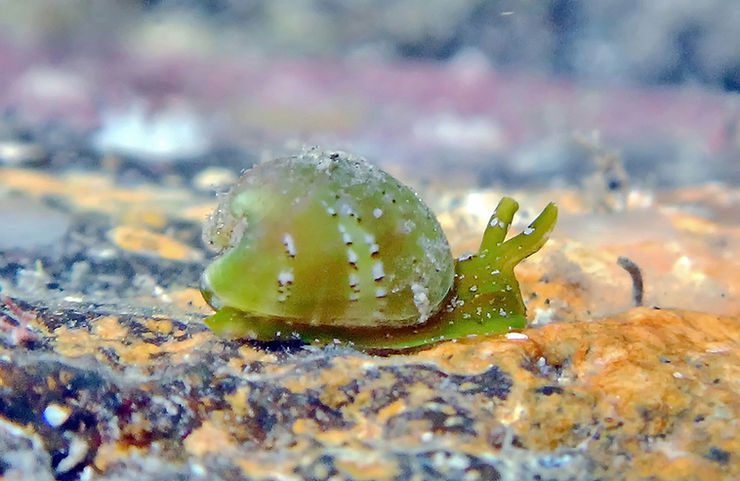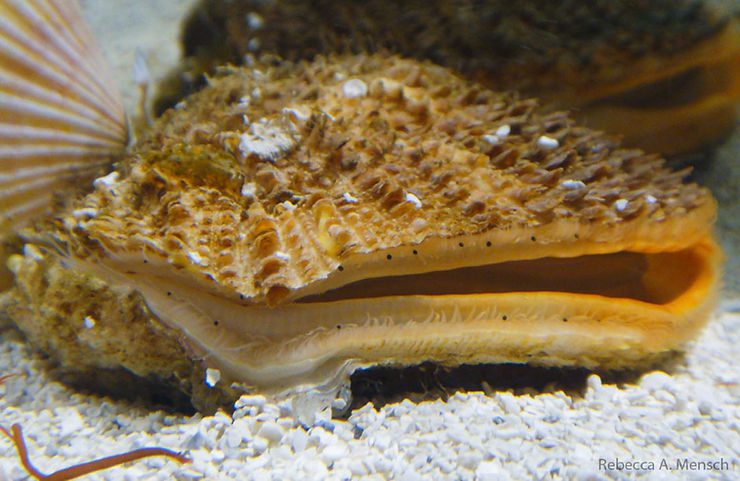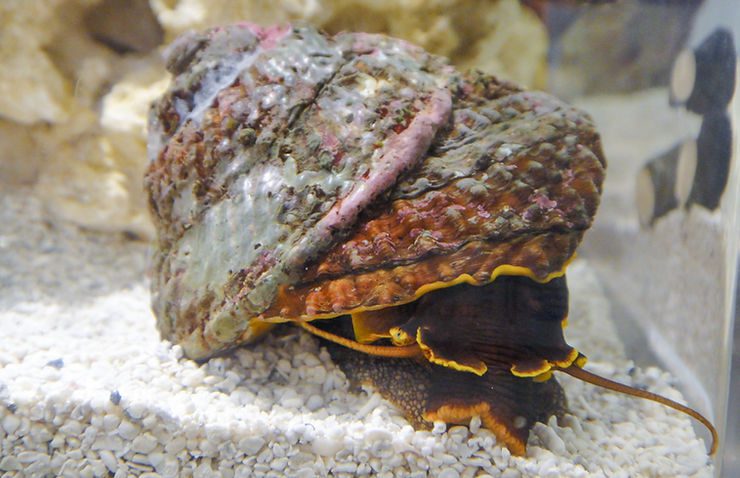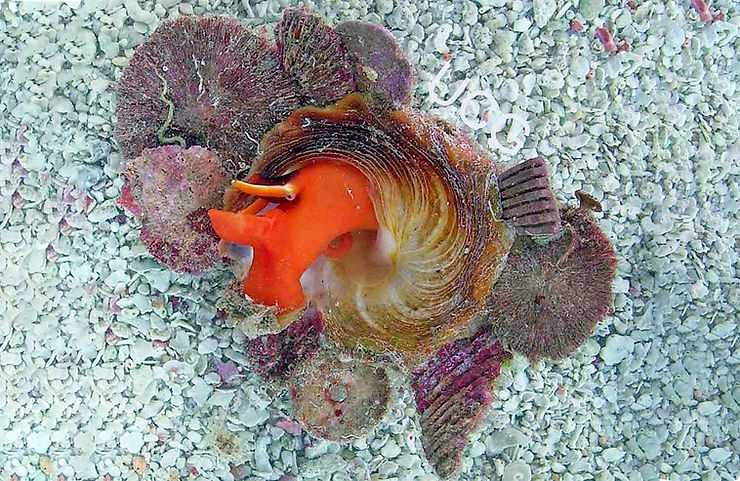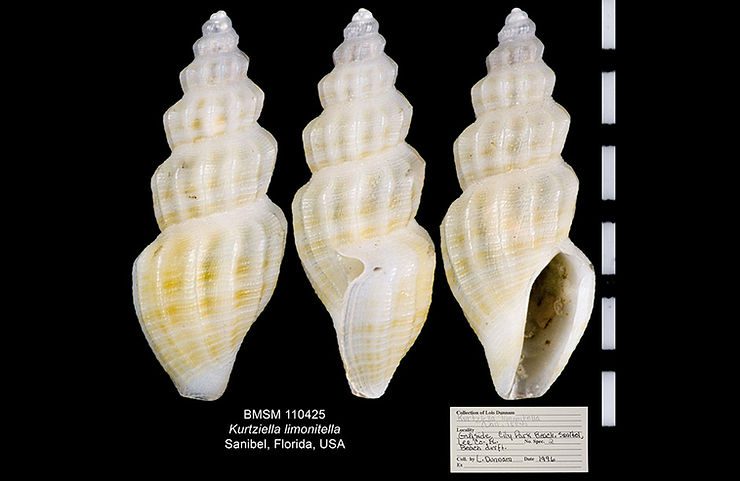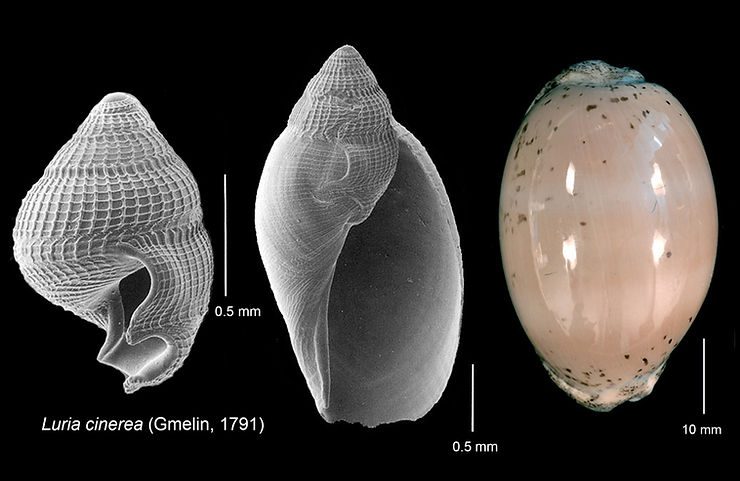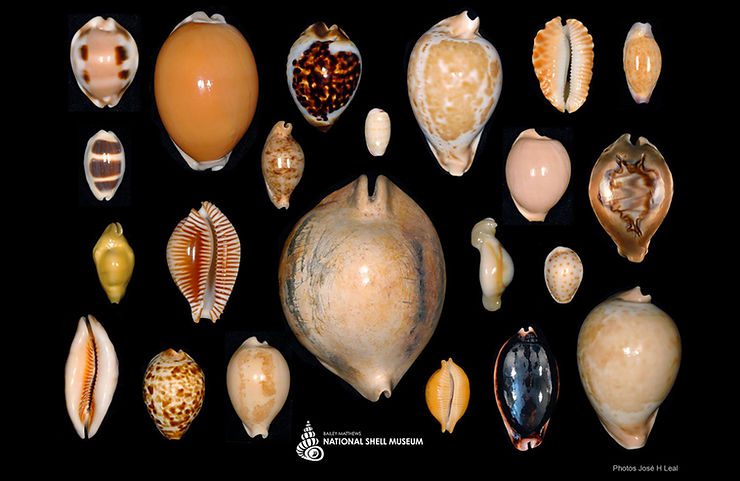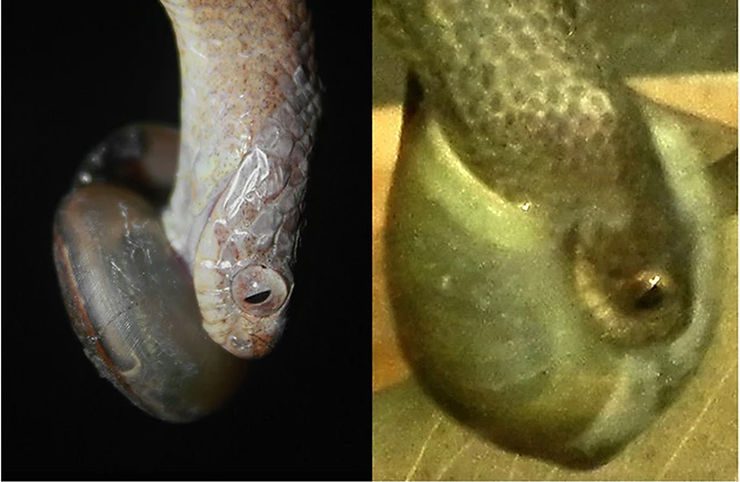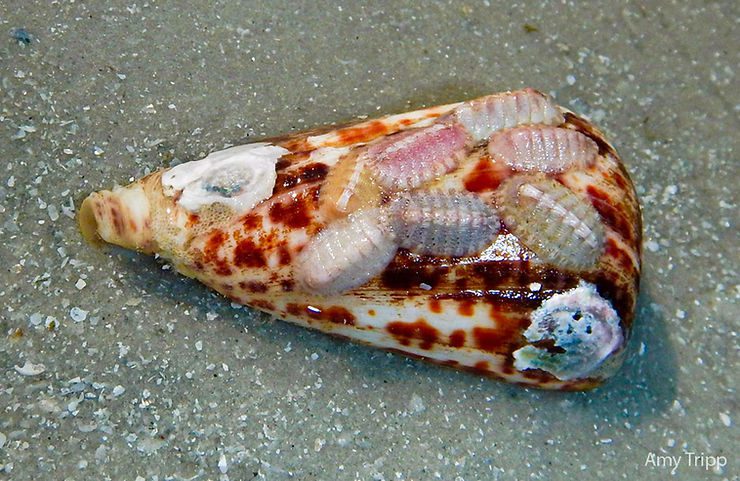
Alphabet Cone and the Seven Chitons!
Shell Museum friend and photographer Amy Tripp captured this great image of seven Eastern Beaded Chitons, Chaetopleura apiculata, "hitchhiking" on an Alphabet Cone snail, Conus spurius, on Kice Island, to the south of Marco Island, Florida. Chiton shells are divided into eight ( or very rarely seven) plates, or valves. They belong to a class of mollusks named Polyplacophora (from the Greek words for "many," "plates," and "bearers"). The plates are interlocked, and are surrounded by a fleshy tis
